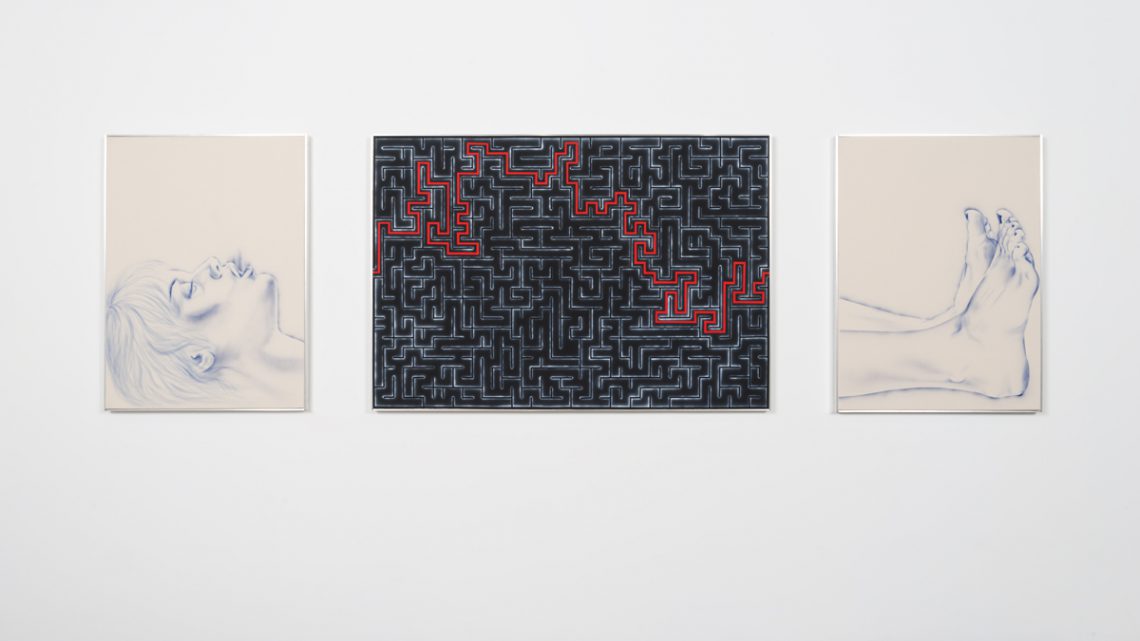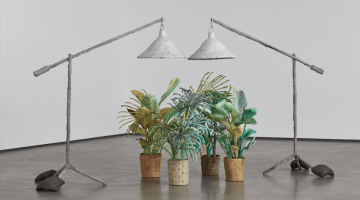Zoe Barcza: DR AWKWARD
Ghebaly Gallery
2245 E Washington Blvd, Los Angeles, CA 90021
November 12 – December 23, 2016
I’m inside an anatomical theater. That, I’m sure of. Where and who I am in this theater is still unclear to me. It’s likely that I occupy multiple locations and roles simultaneously. The autopsist, the lecturer, the student, the corpse, or even the hound that laps the blood from the alley gutter. This metaphor of medical staging has best come to describe my feelings about the current reality. In the wake of the 2016 presidential election, something has seemingly died. A dream? An ideology? A collective body? A delusion? Like most things, this death isn’t wholly good or bad. It’s just here on a surgical table, unimaginably complicated and subject to dissection and study. Whatever knowledge is gained from the ensuing scientific or analytical theatrics, it is ultimately misunderstood. Luckily, the psychological space I inhabit while experiencing DR AWKWARD, Zoe Barcza’s latest exhibition of paintings at Ghebaly Gallery, is remarkably similar to my, and much of this country’s, current mood.
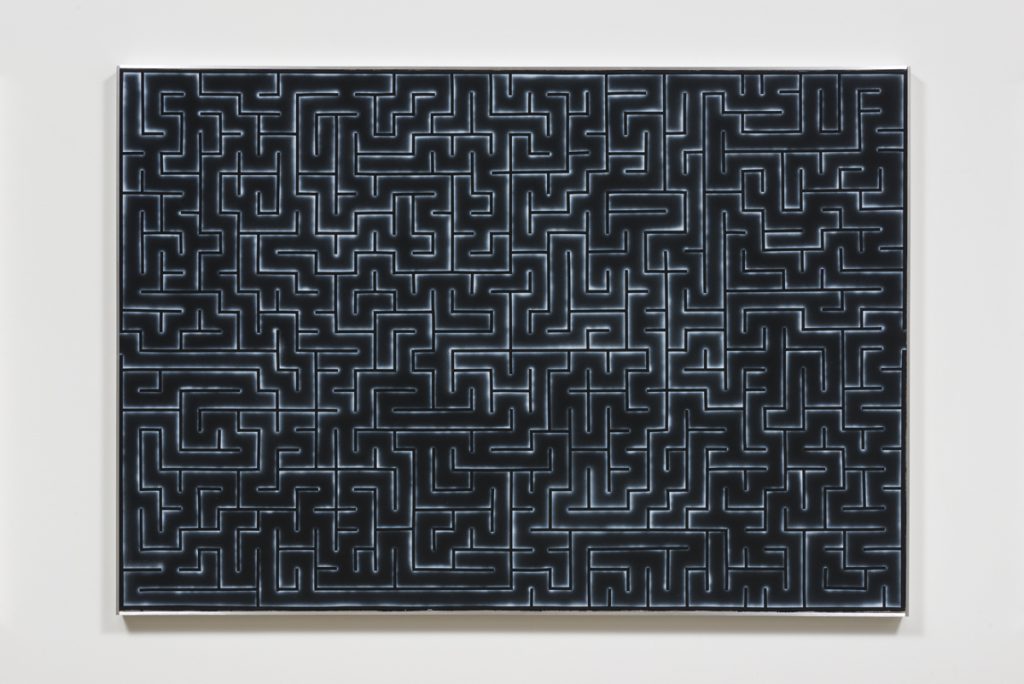
Zoe Barcza, Bob, Level Bob, 2016. Acrylic on canvas and aluminum artist frame. 63 x 43.3 x 1.75 inches. Courtesy the artist and Ghebaly Gallery, Los Angeles. Photo: Jeff McLane
Upon entering the space audiences are confronted with three large triptychs that crowd the walls directly in front and to the right. To the left there are are two smaller paintings which are farther away, have their own walls, and plenty of breathing room. Because of this, the architecture already sets in motion an awkward and disorienting experience. The first thing to notice after quickly surveying the scene is the pallette. Red and blue, black and white. So I put on my conceptual 3d glasses and head for a work titled So Ida, Adios (2016) at what seems to be at the center, or at least central. The first panel of the triptych depicts the head of a young woman lying face up, at rest, in peace, or perhaps fully “resting in peace.” Her mouth gapes open and her eyes are almost entirely shut, with just a sliver of eyeball peeking through. The tendrils of her hair succumbing to gravity, framing the side of her thin face with its well-defined chin and cheekbones. Could this be a self portrait? It bares hints of resemblance to the artist. At least to images of her that I have seen online, but that may be neither here nor there. A bonus easter egg, maybe.
I decide to leave that speculation behind on my way to the second panel which reveals a large maze. Entry and exit points are found at the left and right sides of the rectangular canvas. The black walls of the maze are accented with a white outer glow. A hard edged red line runs along a direct course through maze’s path. In the third panel a set of feet, disproportionately larger in scale to the head in the first panel despite the canvases being the same size, leaves one wondering. Does the maze take the place of the torso of this body? Do the panels have less to do with each other than is implied by their sequencing? Things are getting weird here. The next two triptychs, Bob, Level Bob and Poor Dan Is In A Droop (both 2016) mostly follow suit with the exception of a couple key differences. For starters, it’s probably safe to say the second figure’s head is not human, and the third’s belongs to a man. The ogre-like creature and the man’s eyelids are not shut, but instead wide open, revealing blank eyeballs, and they are painted in red instead of blue. Then there’s the fact that the lines connecting the maze paths in the center panels for these two works are absent, and the man’s maze is white instead of black. I can’t help playing games when they are placed before me, so like an obedient participant, I went about solving the other two mazes and became struck by how amusing, clever, and humorous the device is. Abstract op art meets children’s game meets art appreciation lesson meets dark allusion to the internal body. The airbrush technique here and in the other paintings is remarkably impressive for someone who has claimed they learned how to airbrush paint by looking at Youtube videos on motorcycle refinishing and studying examples from Heavy Metal Magazine to prog-rock album covers. The viewer’s eyeballs dart around the canvas, as if forensic pathologists struggling to draw a line of conclusion from a fresh body, or art authenticators deconstructing every inch of a gesture in a painting that could be the missing link in so and so’s oeuvre. We’ve seen Barcza employ this maze technique earlier in her solo exhibition Texas Liquid Smoke, at Loyal Gallery in Stockholm. There, the titles were much more insinuative, such as ‘Erotic Maze Painting (Young Lady and Witch).’ Figures were imbedded into the image of the maze, so that you “exited” through an image that was accompanied by a titular description. Here Barcza has separated the maze from other images, complicating not just our role and goal in the maze, but the maze’s purpose as well. Whatever role the audience takes on, Barcza’s role is certain and undoubtable. She’s off stage, sitting in the director’s chair, scalpel firmly in hand.
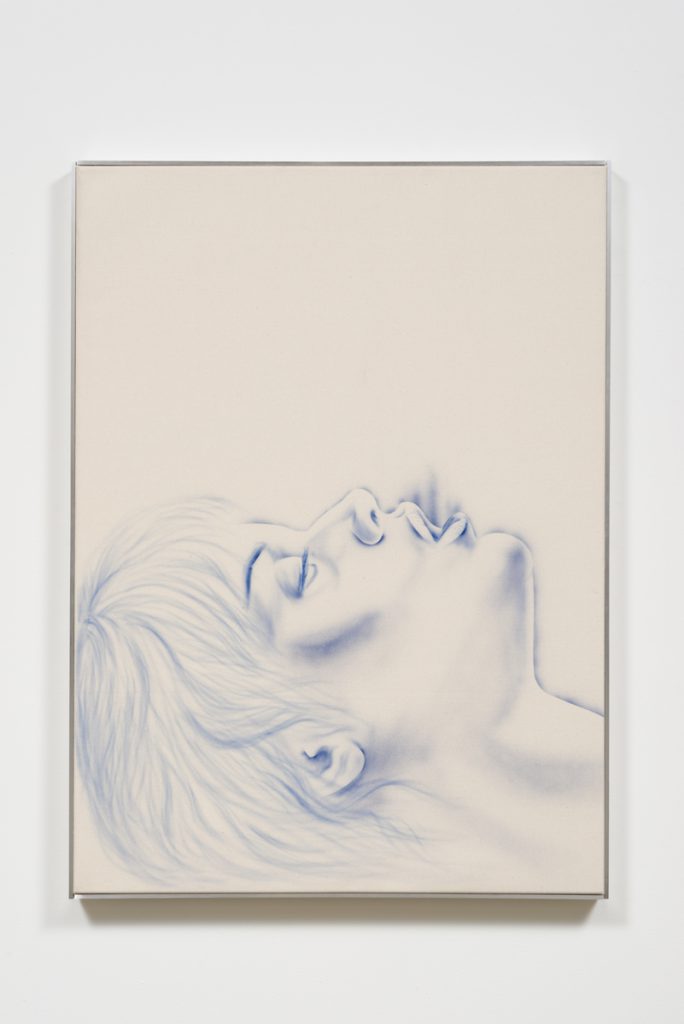
Zoe Barcza, So Ida, Adios, 2016. Installation view, Ghebaly Gallery, Los Angeles. Photo: Jeff McLane
The creepy and clinical atmosphere inherent to the white cube is amplified by Barcza’s palette and the ghostly application of airbrush paint. Not to mention the cold, thin, sleek aluminium frames around each painting. As you approach Evade Me, Dave, the creepy factor ramps up to 11. It’s easily the most complex and haunting work in the exhibition. The work’s title is painted directly onto the canvas in the styling of letters. The solid black ‘E’s on the canvas highlight the linguistic asymmetry within this alphabetically symmetrical palindrome. Above the text floats a fantastically terrifying visage. A figure that, under the talented hands of Barcza, evades becoming an easily recognizable, or fully fleshed-out image (if there even is such a thing). This evokes a sense of constant becoming, of riding the perpetual ebb and flow between abstraction and representation that is inherent in all painting. It’s a ghastly trip, resembling something like the desperate illustrations physicists have made in attempt to render a 2d visual model of string theory (google image search “string theory”). For me, it also looks like a panel out of some psychedelic horror comic, one that I desperately want to get my hands on. If Evade Me, Dave is the strangest work in the show, the most overtly comical one is on the far wall, Dr. Awkward. Here the viewer is confronted with a cartoonish face, scrunched into an Op art landscape nightmare. Of course, your silly-ass face is on the other end of this portal staring back. If you don’t laugh while looking this painting you’re probably lying on a cold metal table with your eyes rolled back into your skull.
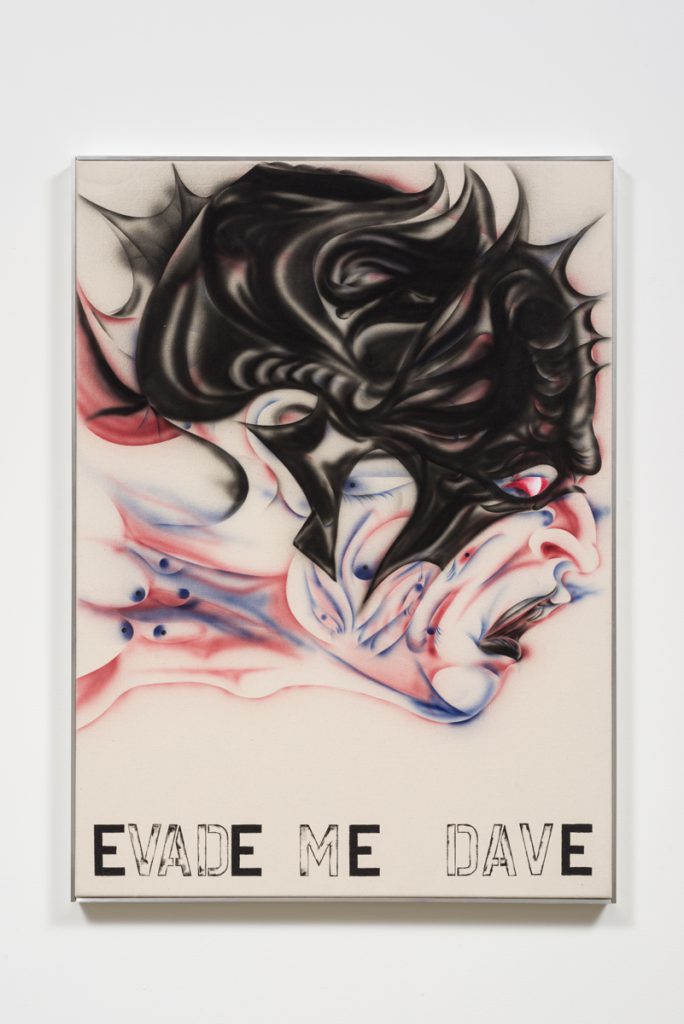
Zoe Barcza, Evade Me, Dave, 2016. Acrylic on canvas and aluminum artist frame. 31.5 x 43.3 x 1.75 inches. Courtesy the artist and Ghebaly Gallery, Los Angeles. Photo: Jeff McLane
I’ll admit that when I head Barcza had a solo exhibition of paintings at Ghebaly Gallery, I calibrated my expectation a bit low. Over the last few years we’ve come to know her practice as one that includes a variety of media, sculptures, and paintings in the form of installations. The prospect of seeing what I thought would be just a few paintings in a room disheartened me. Thankfully, this show is deeply, and fascinatingly immersive. It tunnels into some dark reaches of your psyche, burrowing and implanting itself for future reanimation. If considering the exhibition as an immersive installation, then there’s something else about it that haunts me. Something that only occurred to me as I was leaving. Unlike mazes, like the ones in the paintings, the entrance and exit to this show are the same, which makes this more of a labyrinth than a maze. You have to leave the way you came in. Maybe I found something at the center of that labyrinth that I didn’t expect. Maybe something found me. Something unsettling. Another kind of puzzle. One that’s maybe too scary to try and solve right now. Who is Dr. Awkward?
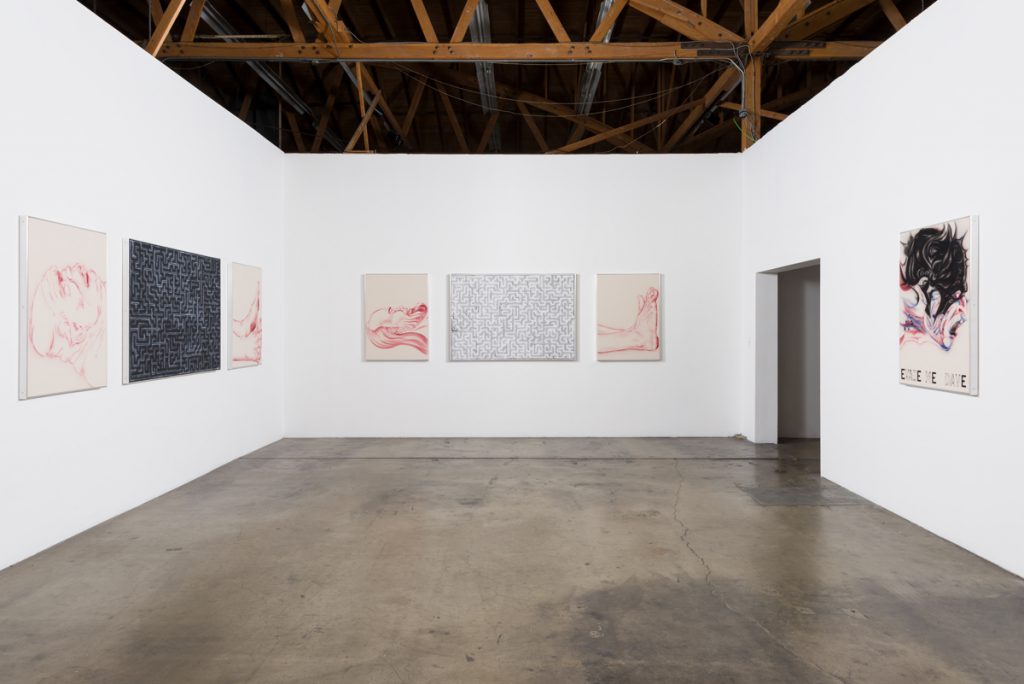
Installation view, Zoe Barcza, DR AWKWARD, Ghebaly Gallery, November 12 – December 23, 2016. Courtesy the artist and Ghebaly Gallery, Los Angeles. Photo: Jeff McLane
